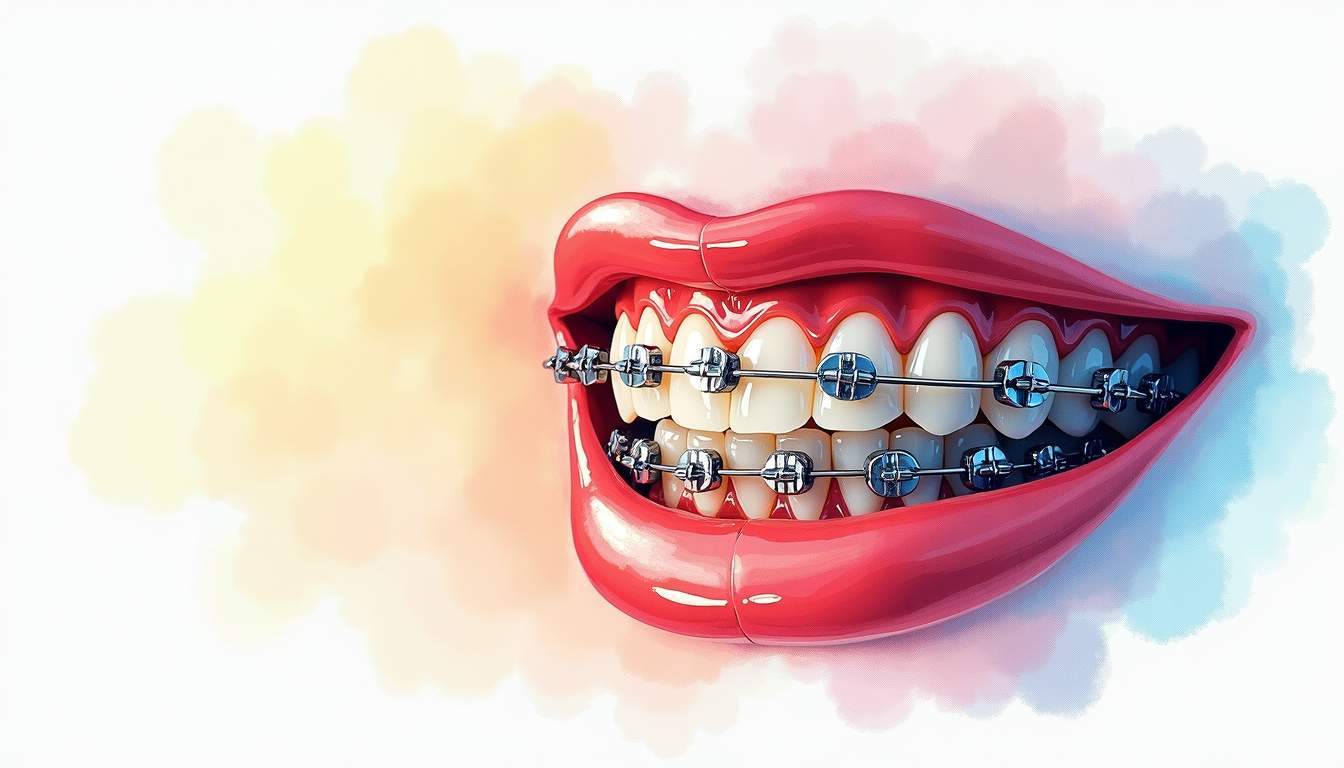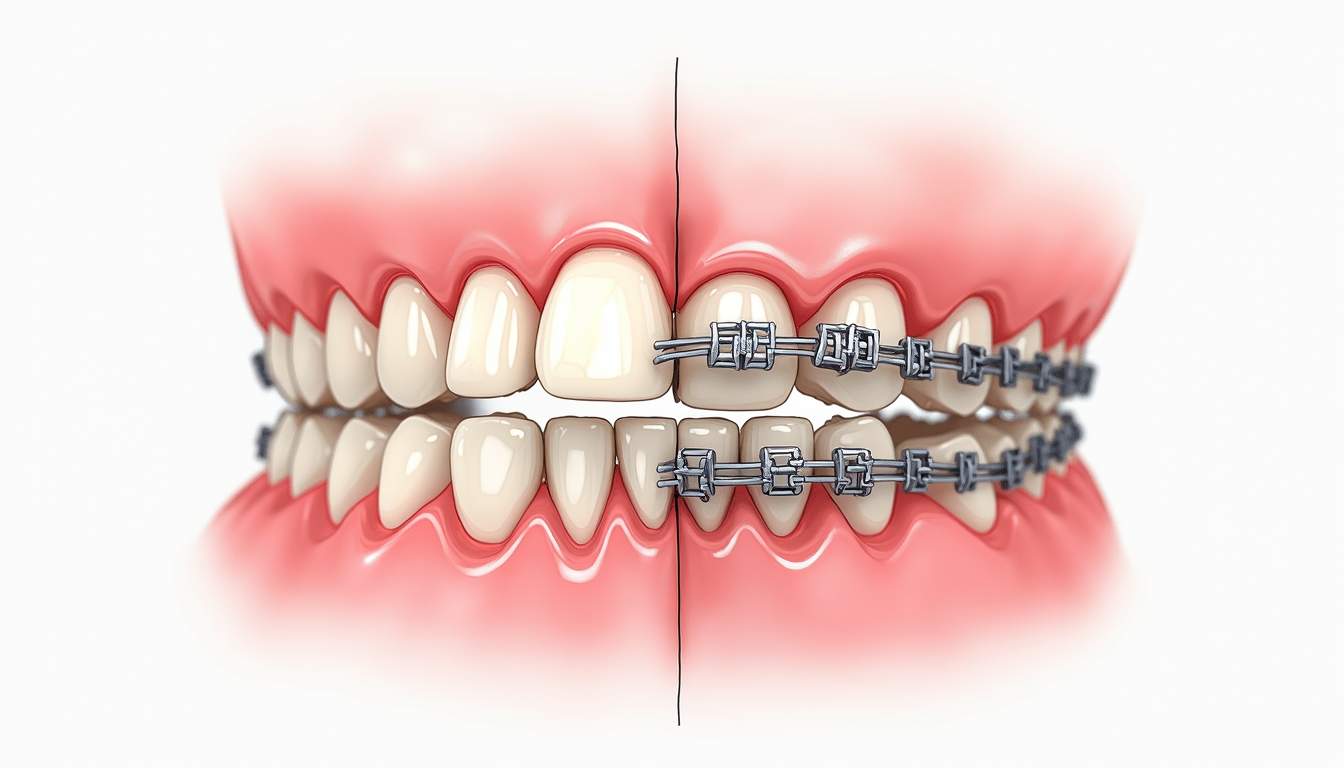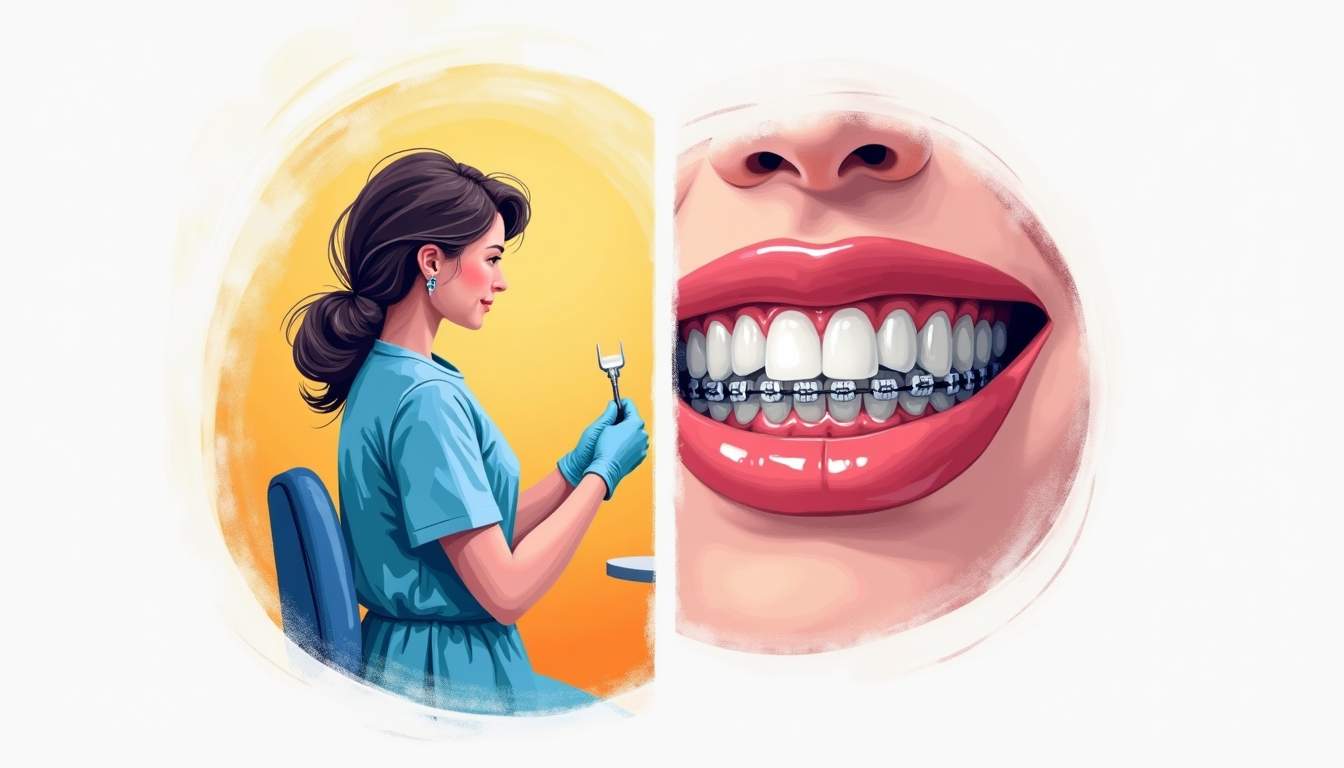views
If you’re considering improving your smile, you’ve probably come across two popular options: veneers and braces. Both can transform your teeth, but they do so in very different ways. Understanding the differences, benefits, and limitations of veneers and braces will help you make an informed decision tailored to your unique dental needs.
Understanding Veneers: A Cosmetic Quick Fix
What Are Veneers?
Veneers are thin, custom-made shells designed to cover the front surface of your teeth. Typically made from porcelain or composite resin, veneers are bonded permanently to your teeth to improve their appearance. They can correct issues such as discoloration, chips, gaps, and even minor misalignments.
Because veneers focus on the visible surface of your teeth, they offer a fast and effective way to enhance your smile’s aesthetics. The procedure usually requires just a few visits to the dentist and can provide dramatic results in a relatively short time. Many patients report feeling a boost in confidence and self-esteem after getting veneers, as they can significantly alter the perception of one’s smile, making it look more youthful and vibrant.
Who Are Veneers Best For?
Veneers are ideal for individuals looking to improve the appearance of their teeth without undergoing lengthy orthodontic treatment. They work well for those with:
- Stained or discolored teeth that don’t respond well to whitening
- Minor chips or cracks
- Small gaps between teeth
- Teeth that are slightly misaligned or uneven
However, veneers are not a solution for significant bite problems or severe misalignment. They are best suited for cosmetic enhancements rather than functional corrections. Additionally, candidates for veneers should have good oral health, as untreated dental issues like cavities or gum disease can complicate the procedure and affect the longevity of the veneers. For more information or to explore if veneers are right for you, visit Indental Castle Hill website.
The Veneers Procedure
The process of getting veneers typically involves three steps:
- Consultation and Planning: Your dentist will evaluate your teeth, discuss your goals, and determine if veneers are the right option.
- Preparation: A small amount of enamel is usually removed from the front of your teeth to make room for the veneers. Impressions of your teeth are taken to create custom veneers.
- Bonding: Once the veneers are ready, they are bonded to your teeth using a strong adhesive. Your dentist will make adjustments to ensure a perfect fit and natural look.
During the bonding process, your dentist may also use a special light to harden the adhesive, ensuring that the veneers are securely attached. This step is crucial for achieving a seamless appearance, as the veneers should blend effortlessly with your natural teeth. After the procedure, patients are often amazed at how their new smile can change their overall facial aesthetics, making them look more approachable and confident.
Pros and Cons of Veneers
Pros:
- Quick transformation, often completed in a few weeks
- Highly aesthetic and natural-looking results
- Resistant to staining
- Minimal maintenance beyond regular dental hygiene
Cons:
- Irreversible procedure due to enamel removal
- Cost can be high, depending on the number of veneers
- Not suitable for significant orthodontic issues
- Potential for damage or chipping over time
It's also worth noting that while veneers can last many years with proper care, they may need to be replaced eventually, especially in cases where they experience excessive wear or damage. Regular dental check-ups are essential to monitor the condition of both the veneers and the underlying teeth, ensuring that your smile remains as stunning as the day you first got them.
Understanding Braces: The Orthodontic Solution
What Are Braces?
Braces are orthodontic devices designed to correct misaligned teeth and bite issues by gradually moving teeth into their proper positions. Traditional braces consist of metal brackets bonded to the teeth, connected by wires and elastic bands. There are also ceramic braces, which are less noticeable, and clear aligners like Invisalign that offer a more discreet option. Each type of brace has its own unique advantages, catering to different preferences and needs, making it essential to consult with an orthodontist to determine the best fit for your dental situation.

Unlike veneers, braces address the underlying structure of your teeth and jaws, improving both function and appearance. This makes them a comprehensive solution for a wide range of dental problems. Braces not only enhance your smile but can also contribute to better oral health by making it easier to clean your teeth properly, thus reducing the risk of cavities and gum disease. The investment in braces is not just about aesthetics; it’s about fostering long-term dental health and confidence.
Who Are Braces Best For?
Braces are suitable for individuals with:
- Crooked or crowded teeth
- Overbites, underbites, or crossbites
- Gaps between teeth that are too large for veneers
- Jaw alignment issues affecting bite and function
They are especially beneficial for younger patients whose teeth and jaws are still developing, but adults can also achieve excellent results with modern orthodontic techniques. In fact, a growing number of adults are seeking orthodontic treatment, driven by the desire for a straighter smile and improved self-esteem. Many orthodontists now offer flexible treatment options, including accelerated orthodontics, which can significantly shorten the duration of treatment for busy adults.
The Braces Treatment Process
The journey with braces involves several stages over months or years:
- Consultation and Assessment: An orthodontist evaluates your teeth and bite, often using X-rays and molds to plan treatment.
- Placement: Brackets and wires are applied to your teeth, and adjustments are made periodically to guide teeth movement.
- Monitoring and Adjustments: Regular visits ensure the braces are working effectively and allow for tightening or repositioning.
- Removal and Retainers: Once teeth are aligned, braces are removed, and retainers are used to maintain the new position.
Throughout this process, patients often receive education on maintaining oral hygiene with braces, as proper care is crucial to prevent issues such as tooth decay or discoloration. Orthodontists may recommend specific cleaning tools, like interdental brushes or floss threaders, to help patients navigate the challenges of keeping their teeth clean while wearing braces. Additionally, patients are encouraged to follow dietary guidelines to avoid damaging their braces, which can prolong treatment time.
Pros and Cons of Braces
Pros:
- Corrects a wide range of dental alignment and bite issues
- Improves oral function and health
- Long-lasting, permanent results when retainers are used properly
- Multiple options available, including discreet clear aligners
Cons:
- Lengthy treatment time, often 1-3 years
- Requires regular orthodontist visits
- Potential discomfort and dietary restrictions
- Initial aesthetic concerns with traditional metal braces
Moreover, while braces can be a significant financial investment, many orthodontic offices offer payment plans to make treatment more accessible. It's important for patients to weigh these factors carefully, as the benefits of achieving a healthy, beautiful smile can far outweigh the temporary inconveniences associated with wearing braces. As technology advances, new innovations in orthodontics continue to emerge, providing patients with even more options to suit their lifestyle and preferences.
Comparing Veneers and Braces: Key Considerations
Speed of Results
If time is a major factor, veneers offer a much faster solution. In just a few weeks, a smile can be dramatically improved. Braces, on the other hand, require patience, with treatment often spanning several months to years depending on the severity of the issue.

Scope of Correction
Braces provide a comprehensive correction of alignment and bite problems, improving both appearance and function. Veneers primarily offer cosmetic improvements and do not address underlying orthodontic issues. For significant misalignment, braces are the better choice.
Durability and Maintenance
Braces, once treatment is complete, provide long-term correction as long as retainers are worn as directed. Veneers can last 10-15 years with proper care but may need replacement or repair over time. Both require good oral hygiene, but braces demand more careful cleaning during treatment.
Cost Factors
Costs vary widely depending on location, provider, and treatment complexity. Veneers can be expensive, especially when multiple teeth are involved. Braces can also be costly, but payment plans and insurance coverage may be available. It’s important to consider both upfront and long-term expenses.
Impact on Natural Teeth
Veneers require removal of some enamel, which is irreversible. Braces work with your natural teeth, moving them without removal, preserving tooth structure. This makes braces a more conservative option in terms of tooth preservation.
Making the Right Choice for Your Smile
Consultation with Dental Professionals
The best way to determine whether veneers or braces are right for you is to consult with dental professionals. A general dentist can assess your cosmetic goals and dental health, while an orthodontist specializes in alignment and bite correction. Together, they can recommend a treatment plan tailored to your needs.

Personal Lifestyle and Preferences
Consider your lifestyle and preferences. If you want a quick cosmetic fix and have minor imperfections, veneers might be the way to go. If you’re willing to invest time and effort into correcting your bite and alignment for long-term benefits, braces are likely the better option.
Long-Term Oral Health
While veneers enhance appearance, braces improve oral health by correcting bite issues that can cause wear, jaw pain, and other complications. Prioritizing long-term health alongside aesthetics is crucial for a truly confident smile.
Conclusion
Both veneers and braces offer valuable solutions for improving your smile, but they serve different purposes. Veneers provide a quick, cosmetic makeover ideal for minor imperfections, while braces offer a comprehensive orthodontic approach to correcting alignment and bite issues.
Choosing between veneers and braces depends on your dental condition, goals, budget, and lifestyle. By understanding the benefits and limitations of each, and consulting with dental professionals, you can make a confident decision that leads to a healthier, more radiant smile.
Remember, the best smile is one that not only looks great but also supports your oral health for years to come.



Comments
0 comment